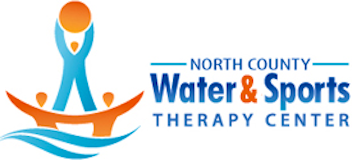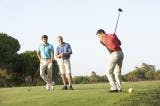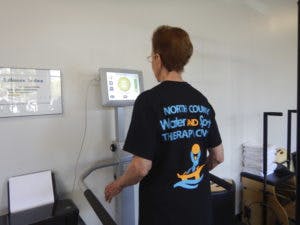“Change happens through movement and Movement Heals”
Joseph Pilates and the Pilates Method
What is Pilates?
Pilates method was originally created in the early 1900s as a series of exercises based on connecting the body, mind and spirit. Joseph Pilates designed this comprehensive program with focus on elongating and strengthening the body, using specific movements and resistive equipment.
Why is Pilates right for you?
1. Build lean muscle and improve strength.
Pilates focuses on quality movements performed with control and precision. The exercises balance strength with flexibility, to build lean muscle while developing foundational strength for your spine and limbs.
2. Restore balance and efficiency of your muscles.
Believe it or not, you have certain muscles that you use more than others. Over time this imbalance leads to back/neck pain and injury. Pilates helps to balance your muscles so that you use them all together instead of one muscle doing the job of 3 or 4. Now, doesn’t that just sound more efficient?
3. Competitive edge.
There are some beastly young NFL guys out there doing Pilates. Why? Because it helps to improve flexibility, balance and strength. Supplementing your normal strength-based gym routine or sport with Pilates as cross training helps stretch, strengthen and lengthen key muscles that give you the extra power for your desired sport.
4. Better posture
We are fight the same battle: Us vs. Gravity. Our jobs have us hunched over our computers, our kids have us hunched over to pick them up. The best way to win the battle against gravity is a Pilates routine, to strengthen the muscles that naturally help to elongate and stabilize your spine. Human 1, Gravity 0…
5. Positive Mindset
Pilates improves circulation, oxygenating the blood and replenishing cells throughout your body. This increase blood flow to the brain, helps you focus and improves your mental outlook.
6. Working through Injury
Whether you have some crunchy shoulder pain or a recent surgery, Pilates is a safe, low-impact alternative to heavy weight lifting or high impact activities. With a solid balance of stretching and strengthening, Pilates is a great way to restore your body during injury while still receiving a fantastic workout!
Pilates is just like any other commitment. It takes an investment of time and energy. But, if you commit to a few times a week for a few weeks, you’ll notice the results for your mind, and body. Pilates isn’t just for a select few athletes, celebrities and dancers. Everyone can benefit from Pilates!
“You will feel better in ten sessions, look better in twenty sessions, and have a completely new body in thirty sessions.” Joseph Pilates
PILATES: NOT JUST FOR WOMEN!
One of the Pilates principles is flow – performing movements with precision without a lot of energy expended. The core stabilizers of your spine are just the starting place for a Pilates session. Once the spine is strong and the core muscle are turned on, the Pilates client is challenged with dynamic movements of the arms and legs while at the same time maintaining a stable core. This makes Pilates not only good for mothers and women, but for athletes to older adults. It helps tune up all those smaller muscles that help stabilize your legs and arms during sport, work and everyday activities to prevent injury.
Are there different types of Pilates?
There are different apparatuses and accessories that can be used to challenge the client during a Pilates session. Most people are familiar with mat Pilates, which is done entirely on a mat, utilizing gravity and the weight of your own limbs to challenge stability and build strength.
The reformer is Pilates machine that utilizes a moveable carriage attached to a series of springs that can be modified to increase or decrease the challenge of the exercise. The reformer is one of the best places to start for a client who has never tried Pilates, or for the rehabilitation patient who is getting back into physical exercise and building strength. The reformer allows the client to be challenged through increasing resistance while maintaining a safe, supportive environment for their spine.

Is Pilates the same as yoga?
While Pilates and yoga have some similarities, Yoga typically focuses on flexibility, balance, and prolonged holds of certain positions; the focus of Pilates is on control, precision, mindfulness, breathing and alignment to build stability in the spine and strength in the extremities. Pilates focuses on decreasing the tension in tight muscles, and intentionally strengthening the weak muscles. Each movement is focused on a deliberate execution with precise movement. Mindfulness and functional breathing helps the client execute each movement with control. Pilates movements should never be sloppy and should always be challenging. The core control utilized during Pilates should be focused on using as much energy as necessary, but as little as possible.
Beginner’s Pilates exercises:
Wherever you are reading this, notice how you’re standing. Chances are that the lower part of your ribcage is flaring out this very moment. Just a simple adjustment in your ribcage position can build your core strength. Here’s a step by step:
- Lie on your back with your hands resting on your ribcage
- Draw your ribcage down so that your stomach is flat.
- Draw in your belly button to hold the new position.
- Now, breathe in deeply without allowing your ribcage to change position


Most people don’t know how to move their spine independently. For most people it just moves like a brick, and this can subject your body and spine to injury
- Lie on your back.
- Beginning at your pelvis, press it down against the floor.
- Begin to peel your spine up off the floor as you lift your sit bones off of the floor.
- One vertebrae at a time, try to feel each vertebra as it separates and peels off the floor
- At the top of the movement, reverse direction of the spine as you lower back down to the floor. You should be able to feel each vertebra individually as your spine returns to the floor.

Many people don’t know how to activate their core muscles. This is a good exercise to start with if you’re having trouble.
- Begin by lying on your back with your feet flat.
- Put your arms straight out in front of you, with your fingers pointed toward the ceiling. Take the resistance band in your both hands as shown in (picture).
- Gently pull on the band to create a small amount of resistance, but maintain straight arms and straight wrists.
- Hold this position for 10 seconds.
- You should begin to feel your core muscles turn on!


Coming Soon…



 herapists and movement experts we can get you moving better and back in the game.
herapists and movement experts we can get you moving better and back in the game.


 fitlights, random pattern with different colors
fitlights, random pattern with different colors
